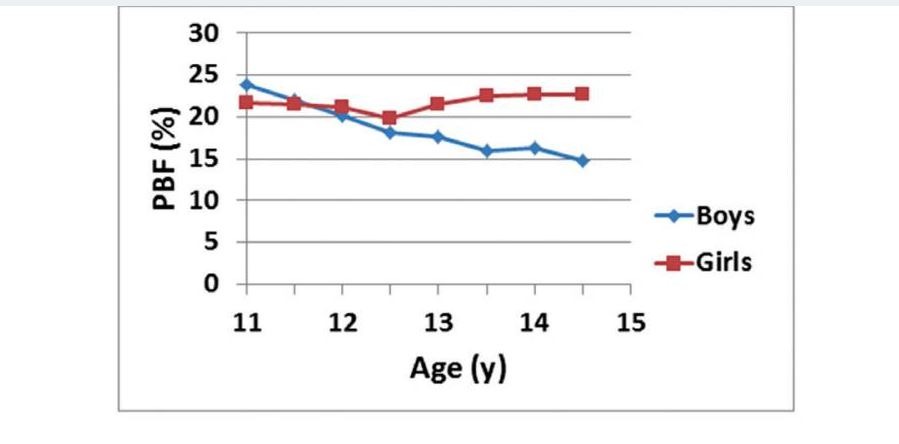The Body Mass Index (BMI) has been the standard metric for evaluating health for many years, yet it has numerous shortcomings. Because it doesn’t distinguish between muscle and fat, it frequently incorrectly labels fit people as overweight and underestimates the health concerns associated with people who have low muscle mass but excess fat.

A revolutionary statistic that provides an accurate description of body composition is PBF (Percentage Body Fat). PBF measures fat levels directly and offers significantly more insightful health information than BMI, which solely considers height and weight. PBF is the figure that really counts, whether you’re an athlete trying to maximize your performance or someone seeking long-term wellness.
What is PBF? How It Compares to BMI
| Metric | Definition | Why It Matters |
|---|---|---|
| PBF (Percentage Body Fat) | The percentage of fat relative to total body weight | Accurately reflects body fat and overall health risks |
| BMI (Body Mass Index) | A calculation based on height and weight | Does not account for muscle mass, often misclassifying individuals |
| Visceral Fat | Fat stored around organs | Directly linked to cardiovascular diseases and metabolic disorders |
| Lean Body Mass | The weight of muscles, bones, and organs minus fat | Essential for strength, metabolism, and overall health |
📌 Source: National Institutes of Health (NIH)
The Reasons PBF Is a Better Health Measure Than BMI
The BMI is too simplistic
BMI does not take into consideration variations in body composition; it simply takes height and weight into account. A person with a lot of muscle mass might be classified as overweight, yet someone with little muscle mass but a lot of fat might look healthy.
PBF Determines Real Fat Contents
PBF provides a more realistic picture of metabolic health by concentrating on fat percentage rather than total body weight. This makes it an effective tool for spotting cardiovascular problems, diabetes risks, and obesity before they become major problems.
Revealing “Hidden” Risks of Obesity
Known as “skinny fat” or metabolically obese normal weight (MONW), many people have a normal BMI but dangerously high body fat. PBF is a crucial metric for accurate health evaluation since it exposes these hidden hazards.
A Healthy PBF: What Is It? Comprehending the Ranges
Age, gender, and degree of activity all affect PBF. While a slightly higher range is typical for the general population, athletes naturally have lower fat percentages.
| Category | Men (% PBF) | Women (% PBF) |
|---|---|---|
| Athletes | 6% – 13% | 14% – 20% |
| Fitness Range | 14% – 17% | 21% – 24% |
| Average Healthy | 18% – 24% | 25% – 31% |
| Overweight | 25% – 30% | 32% – 39% |
| Obese | 31% + | 40% + |
💡 Key Takeaway: Your chance of developing diseases linked to obesity, such as diabetes, heart disease, and metabolic syndrome, increases with your PBF. Maintaining PBF within a healthy range improves general well-being, lowers health risks, and gives you more energy.
How is the PBF calculated? Top Techniques for Accuracy
Scales for Bioelectrical Impedance Analysis (BIA)
BIA scales are accessible and reasonably priced. They measure the body’s fat proportion by passing a little electrical current through it. Nevertheless, food consumption and hydration levels can affect outcomes, making them less accurate than expert techniques.
Skinfold Calipers, pair
An economical choice that uses numerous sites to measure fat thickness. Caliper readings can be surprisingly precise when performed by a qualified expert.
DEXA scan, or dual-energy X-ray absorptiometry
A DEXA scan, the gold standard for body composition study, provides remarkably accurate measurements of bone, muscle, and fat density. It is frequently employed for comprehensive health evaluations in medical and athletic contexts.
Hydrostatic Weighing (#4)
A very accurate but less widely available technique that uses buoyancy principles to quantify fat by immersing the body in water. In sports science and research contexts, this approach is frequently employed.
Why PBF Is a Vital Sign for Fitness and Health
🔹 Finding Obesity Risks Not Included in BMI
PBF measures fat mass directly, making it a considerably better tool for detecting obesity and related disorders than BMI, which has the potential to misclassify people.
🔹 Preventing Hypertension and Heart Disease
Increased visceral fat, which increases the risk of high blood pressure, diabetes, and cardiovascular disease, is closely associated with higher PBF. People can take action before these hazards worsen by keeping an eye on PBF.
🔹 Vital for Optimal Sports Performance
Weightlifters require slightly greater fat percentages for muscular function and energy reserves, but sprinters and endurance athletes benefit from low PBF. Athletes can customize their diet and training plans by tracking PBF.
How to Effectively Reduce PBF
🟢 Resistance Training & Strength Training
Gaining muscle improves metabolism, which keeps lean mass while enabling the body to burn fat more effectively.
🟢 HIIT, or high-intensity interval training
HIIT exercises are a great way to lose weight. They are among the most effective ways to lower PBF since they burn calories rapidly without sacrificing muscle.
🟢 A well-balanced diet that includes a lot of protein
A high-protein diet encourages fat loss and helps maintain muscular mass. Plant-based proteins, fish, eggs, and lean meats are all great options.
🟢 Calorie Shortfall Without Malnutrition
The secret is to cut calories without sacrificing adequate nutrients. A consistent, nutrient-dense diet can lower PBF without sacrificing strength, although extreme dieting can result in muscle loss.
